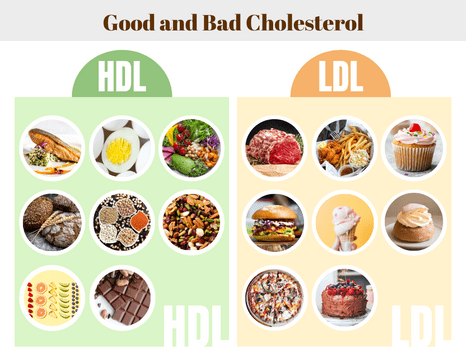Good and Bad Cholesterol Infographic
Visual Paradigm Online is the perfect solution for creating high-quality infographics like this one. Our graphic design editor is easy to use and requires no prior design experience. Simply select a template from our extensive graphic design template library or start from scratch and let your creativity flow.
Don’t settle for generic infographics, make your mark with a fully customizable design from Visual Paradigm Online. Visit our website to learn more about our online infographic maker and start creating your own stunning infographics today.
Want to see more of what Visual Paradigm Online has to offer? Check out our graphic design template library for a wide range of design options to fit any need. From business presentations to social media graphics, Visual Paradigm Online has you covered.
More about Visual Paradigm Online’s graphic design editor: https://online.visual-paradigm.com/infoart/
Graphic design template library: https://online.visual-paradigm.com/infoart/templates/
How to control cholesterol?
High cholesterol levels can increase the risk of developing heart disease, stroke, and other health problems. Fortunately, there are several steps you can take to help control your cholesterol levels:
- Eat a healthy diet: Focus on eating foods that are low in saturated and trans fats. Choose lean protein sources, such as chicken, fish, and legumes, and include plenty of fruits, vegetables, and whole grains in your diet.
- Exercise regularly: Regular physical activity can help raise your HDL (“good”) cholesterol levels and lower your LDL (“bad”) cholesterol levels. Aim for at least 30 minutes of moderate-intensity exercise most days of the week.
- Maintain a healthy weight: Being overweight or obese can increase your LDL cholesterol levels and decrease your HDL cholesterol levels. Losing even a small amount of weight can help improve your cholesterol levels.
- Quit smoking: Smoking can damage your blood vessels and increase your risk of developing heart disease. Quitting smoking can help improve your cholesterol levels and reduce your risk of other health problems.
- Limit alcohol consumption: Drinking too much alcohol can raise your triglyceride levels and increase your risk of developing high blood pressure and heart disease. Limit your alcohol consumption to no more than one drink per day for women and two drinks per day for men.
- Take medication if necessary: If lifestyle changes alone are not enough to control your cholesterol levels, your doctor may prescribe medication to help lower your cholesterol.
It’s important to work with your doctor to determine the best course of action for controlling your cholesterol levels, as everyone’s individual needs and circumstances may be different.


